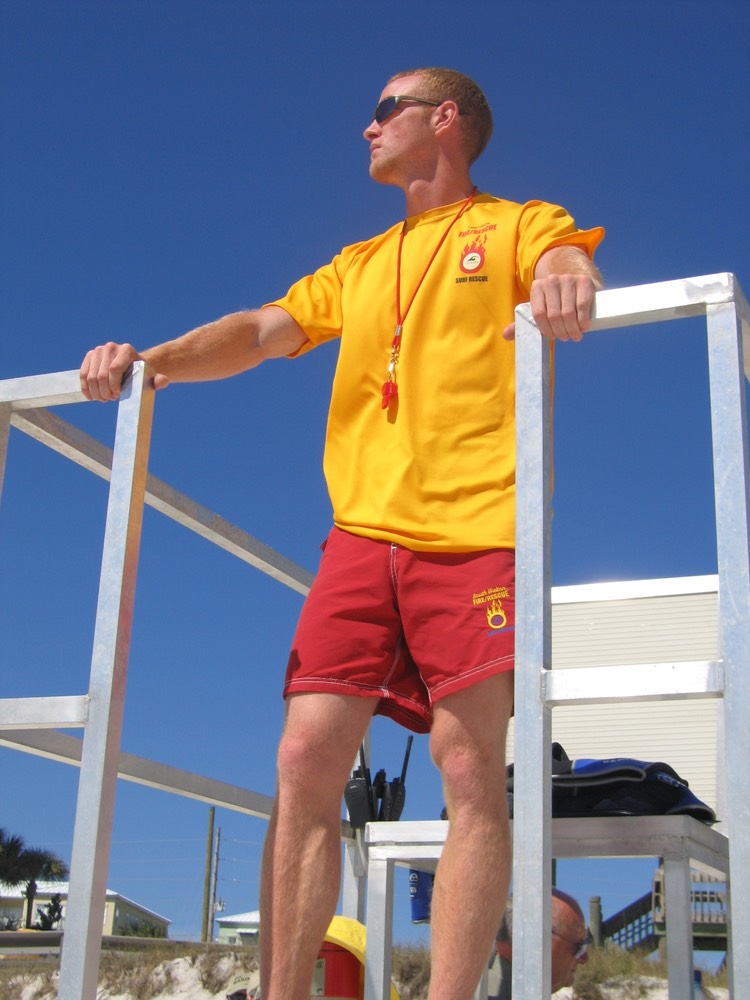
vie-magazine-beach-safety-tdc
Beach Safety
Submitted by Beaches of South Walton
Arriving at the beach often brings about the feeling of relaxation. The scenic beauty of the sugar-white sand and emerald green waters, the smell of the salt air, and the sounds of waves lapping the shore have an amazing effect on one’s state of mind. But amidst this beauty can lurk danger, and it is important to be informed and aware of ways to stay safe while enjoying one of Mother Nature’s best attractions.
Regular beachgoers have their visits down to a science. They often access the Internet to check the flag warning system at www.swfd.org to find out about the surf conditions and to know what to anticipate before arriving at the beach. The flag colors signify surf conditions and the likelihood of rip currents. If red flag conditions are present, then “knee-deep is too deep” and beachgoers know that cooling down is limited to the water’s edge. When double red flags are flying, the water is closed for swimming and regulars often bring extra water and umbrellas to stay cool. While beachgoers should always exercise caution when swimming in the Gulf, the best days to swim are when green or yellow flags are flying. If the purple flag is added, marine pests are present and swimmers should watch out for jellyfish, stingrays, or other dangerous fish.

Powerful rip currents occur along the Gulf Coast, so the importance of obeying the flag warning system is paramount. Due to the double-sandbar topography of this region, dangerous rip currents form when there is a break in the sandbar, which creates a narrow path of water that rushes out to sea. Swimmers in this path will suddenly feel themselves being pulled away from shore. Feeling frightened, swimmers may panic and resist the current, trying to swim back to shore. However, it is nearly impossible to swim against this powerful current. Therefore, if you are caught in a rip current, relax, float with the current until it dissipates, and then swim parallel with and back to shore. Local residents know that the best way to avoid rip currents is to know the surf conditions before entering the water.
Regular beachgoers are also systematic in selecting where to access the beach. The Beaches of South Walton Tourist Development Council maintains more than fifty-six public beach accesses, providing ample opportunity to reach the beach. Many choose to use one of the area’s eight regional public accesses with parking, restrooms, and lifeguards. With rip currents being difficult to detect for the majority of beachgoers, lifeguards are present to monitor surf conditions, and they can identify when rip currents form. By enjoying the beach where lifeguards are present, beachgoers are provided with added safety under the watchful eye of a trained professional.
[double_column_left]
Matt Ward

“The lifeguard program is an extension of the beach safety program, and it focuses heavily on education and prevention. Focusing on education and proactive prevention reduces the need for emergency response,” said Gary Wise, beach safety director for the South Walton Fire District. “While we have a strong team whose training surpasses USLA standards, we’d much rather spend our time informing beachgoers about the flag warning system and rip currents than performing rescues.”
Now in its fourth year, the program has a total of thirty well-trained lifeguards, including twenty-four returning guards from previous years, who have passed forty-eight hours of classroom and USLA open water rescue training as well as forty hours of DOT First Responder training. Last year, roving lifeguards on ATVs were added to the program. The ATVs allow lifeguards to patrol outside the eight regional beach accesses to inform as many beach visitors as possible of the potential and often hidden dangers associated with the beach.
[double_column_left]“We strive to make contact with every beachgoer as they make their way down the boardwalk and onto the beach,” said Matt Ward, a second-year South Walton lifeguard. “Most new visitors are not aware of the flag system and don’t look to see what flag is flying. It’s our job to educate these people before they find themselves in a difficult situation.”
“With the use of Seemore The Safety Crab promotional items, such as beach balls and Frisbees, we are able to engage and educate children, in addition to their parents,” Ward added. “Kids really enjoy learning about the flag colors and getting a beach safety item that they can use on the beach during their stay.”
[/double_column_left] [double_column_right]
Other hazards at the beach range from overexposure to the sun to jellyfish stings. Some of the things that seasoned beachgoers keep in their bags include sunscreen, towels, bottled water, and trash bags (for their own and other trash found along the beach). For jellyfish stings, most carry either meat tenderizer, baking soda, or a small bottle of vinegar. And, just in case, many regulars bring some type of bug repellent; one home remedy used by locals is a mixture of water and Listerine in a spray bottle.
By making preparation a part of heading down to the beach, beachgoers stay safe while relaxing and creating memories that last a lifetime.
— V —
Share This Story!
KEEP UP WITH THE LATEST STORIES FROM VIE


















































































































































